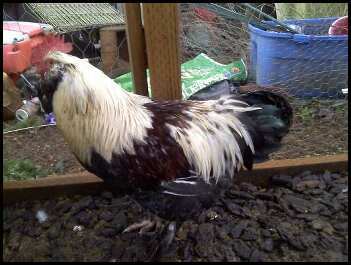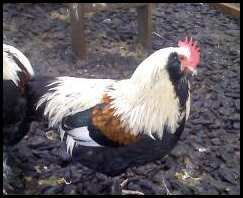Quote:
Yeah, he isn't the most willing to stand there forever for me to take pics, like the other one is! Thanks - it's nice to have multiple opinions telling me I've done the right thing!
Yes, and even though pictures can be deceptive sometimes, it still helps those of us trying to learn when pictures are critiqued. For me its much easier to have things (both good and bad) pointed out on an actual bird than just reading a description of what they are supposed to look like.
As we all know there is no perfect bird. I've bred some birds where I bred best to best and only got a few decent ones. I've bred other birds using pluses and minuses and have had better results. For example: a short flat backed male to a long flat backed female or a seven point combed bird to a four point combed. You strive for the right balance. You should start with what you have remembering every time you bring in new blood other problems can arise. You need to develop a flock where they are all related. Grandfather, grandmother, father, mother, nieces, nephew, sons, daughters, aunts and uncles. Then you need to close your flock down like Peter has done. It should give you better control and better consistancy in your offspring. It's called years of work and dedication for our Faverolles breed.
In a lot of pictures on this thread I can see faults. If a male has some bad faults he needs to be bred to a female that doesn't have those faults. YOU NEED TO KNOW AND UNDERSTAND THE STANDARD, because if you don't and you breed a bad fault bird to a bad fault bird all the offspring will carry those bad faults and you would be heading down the wrong road. I think all birds are good if bred to the right bird.
Dick












